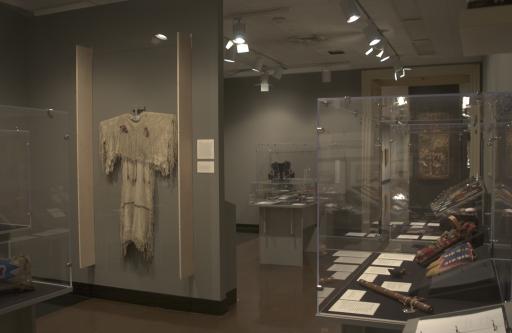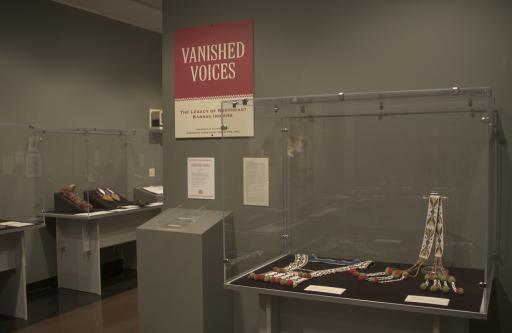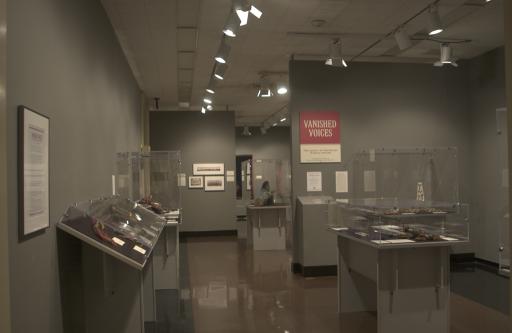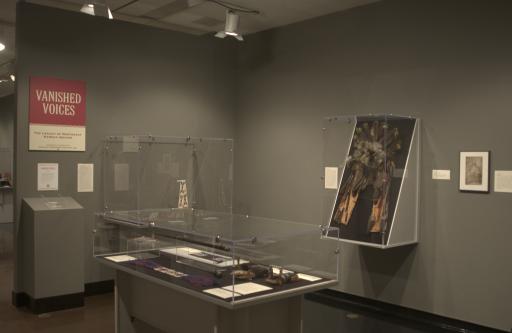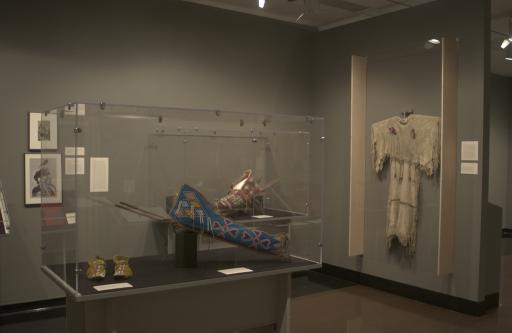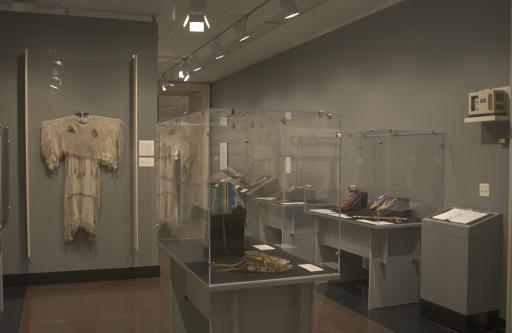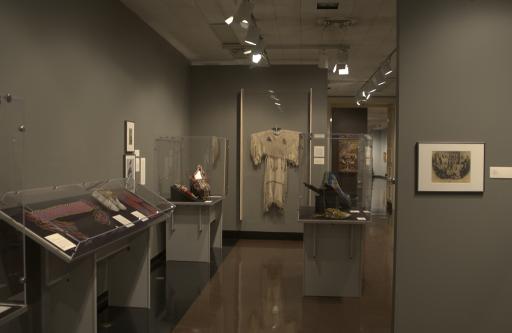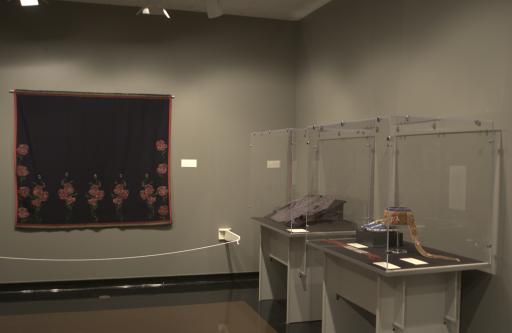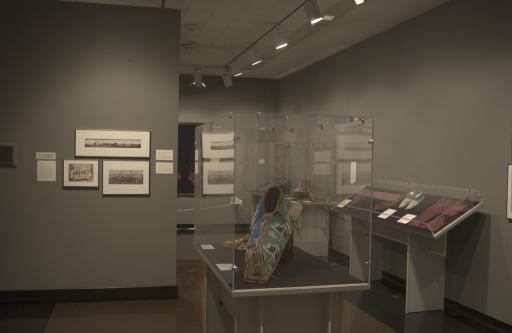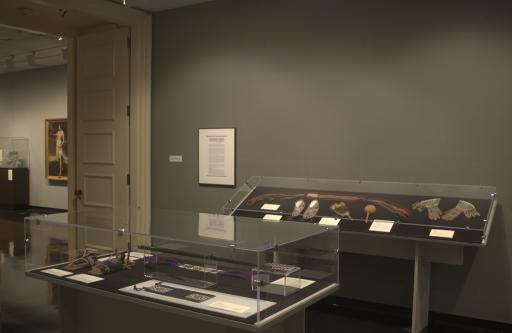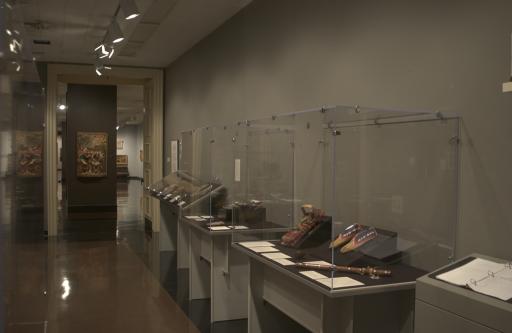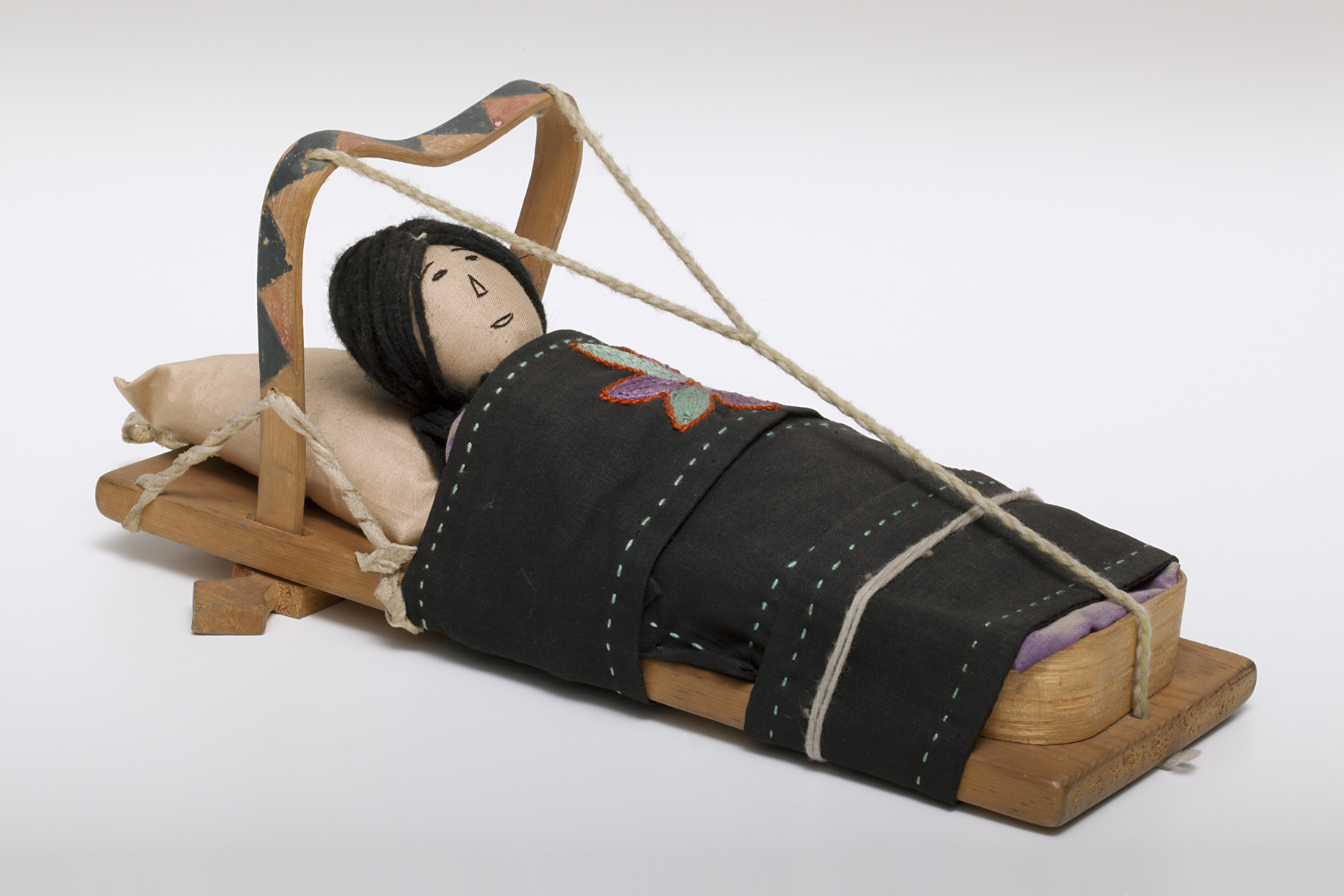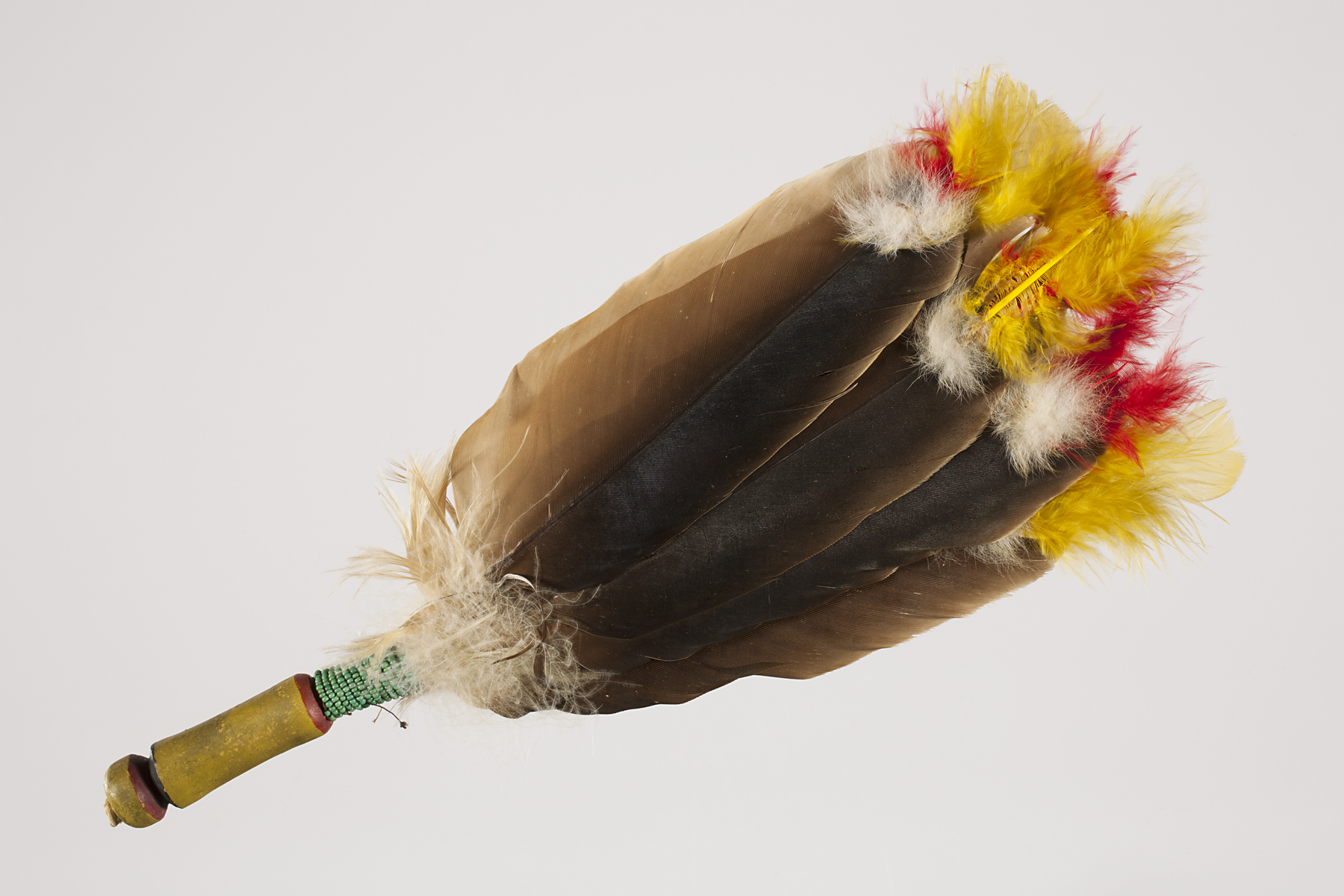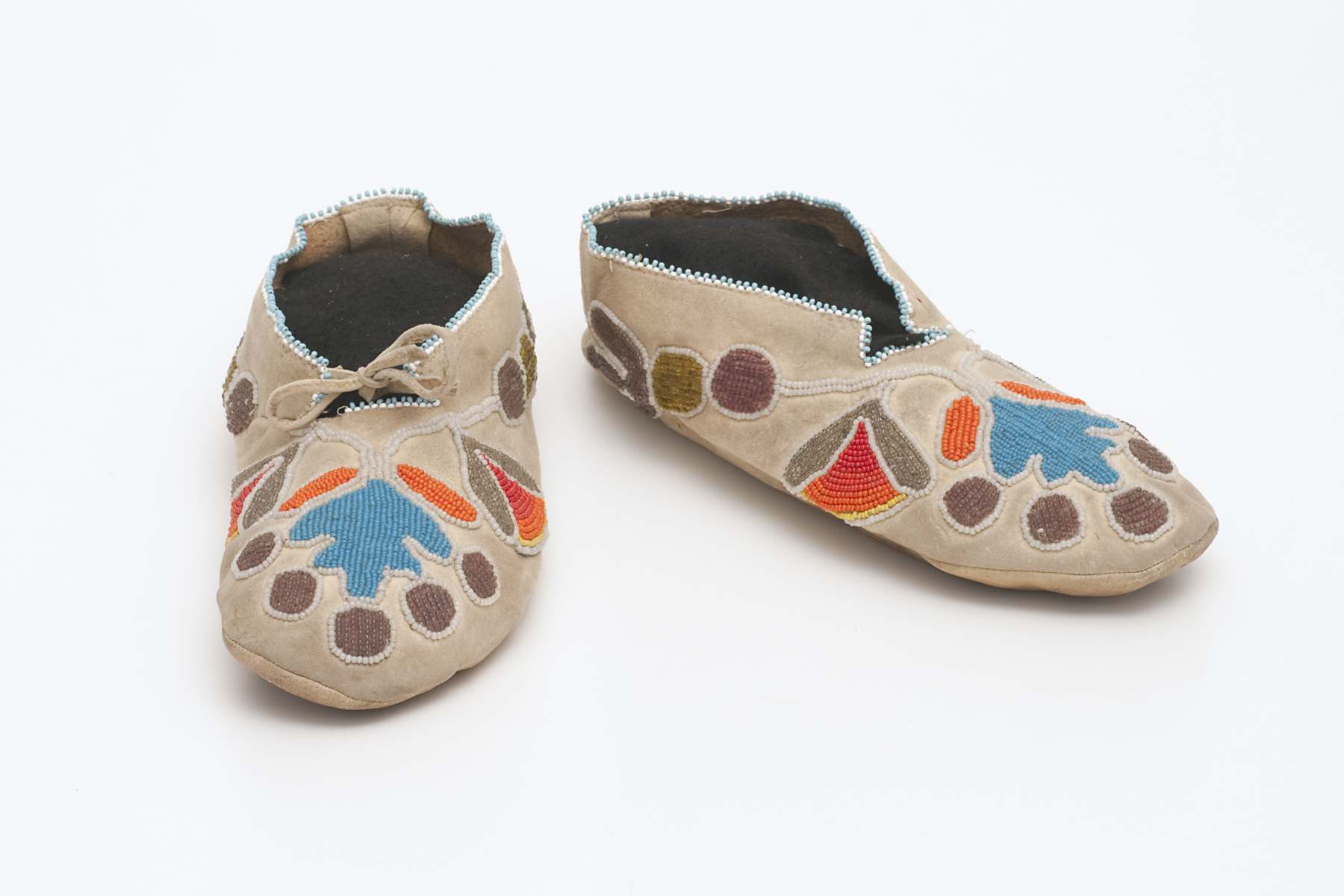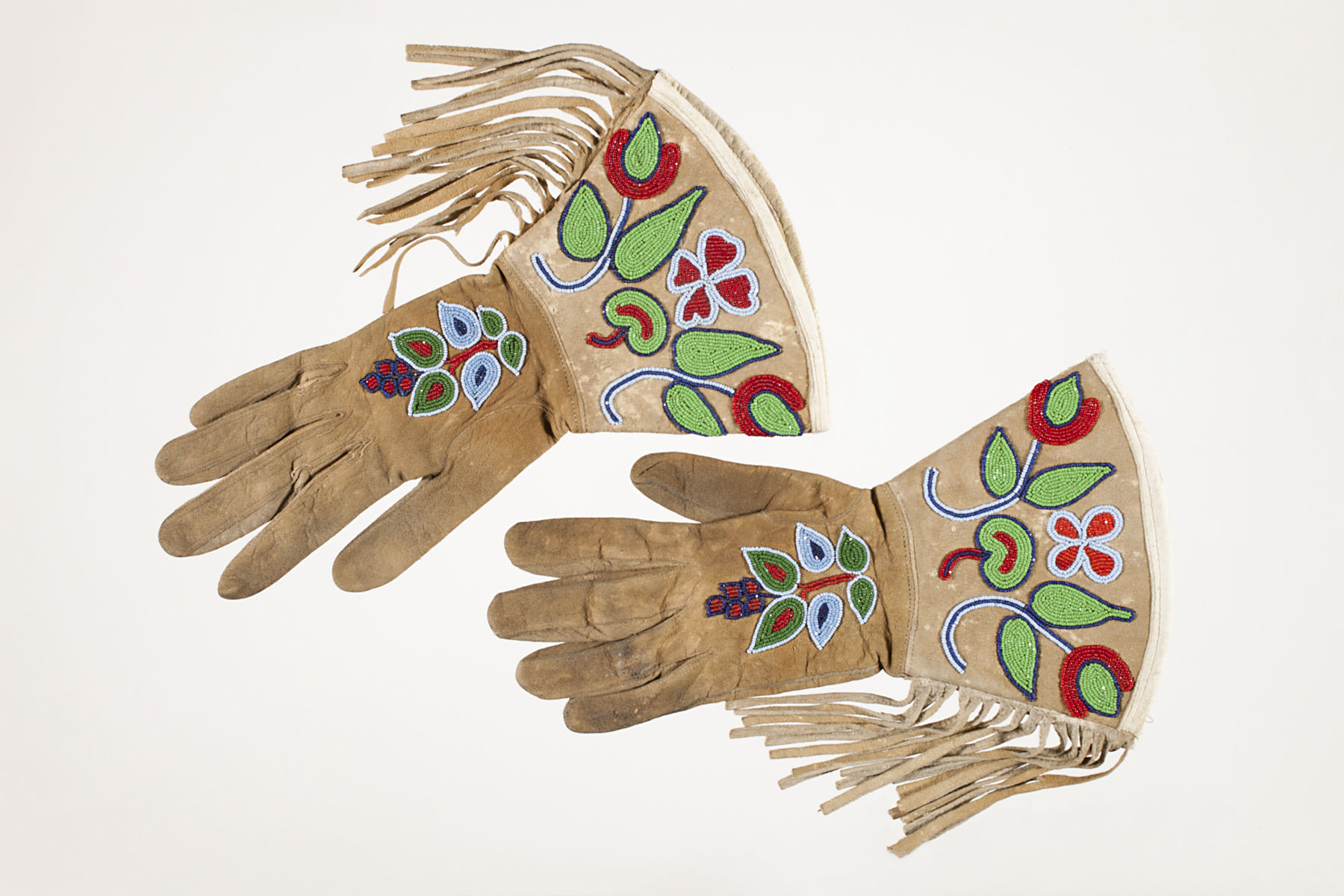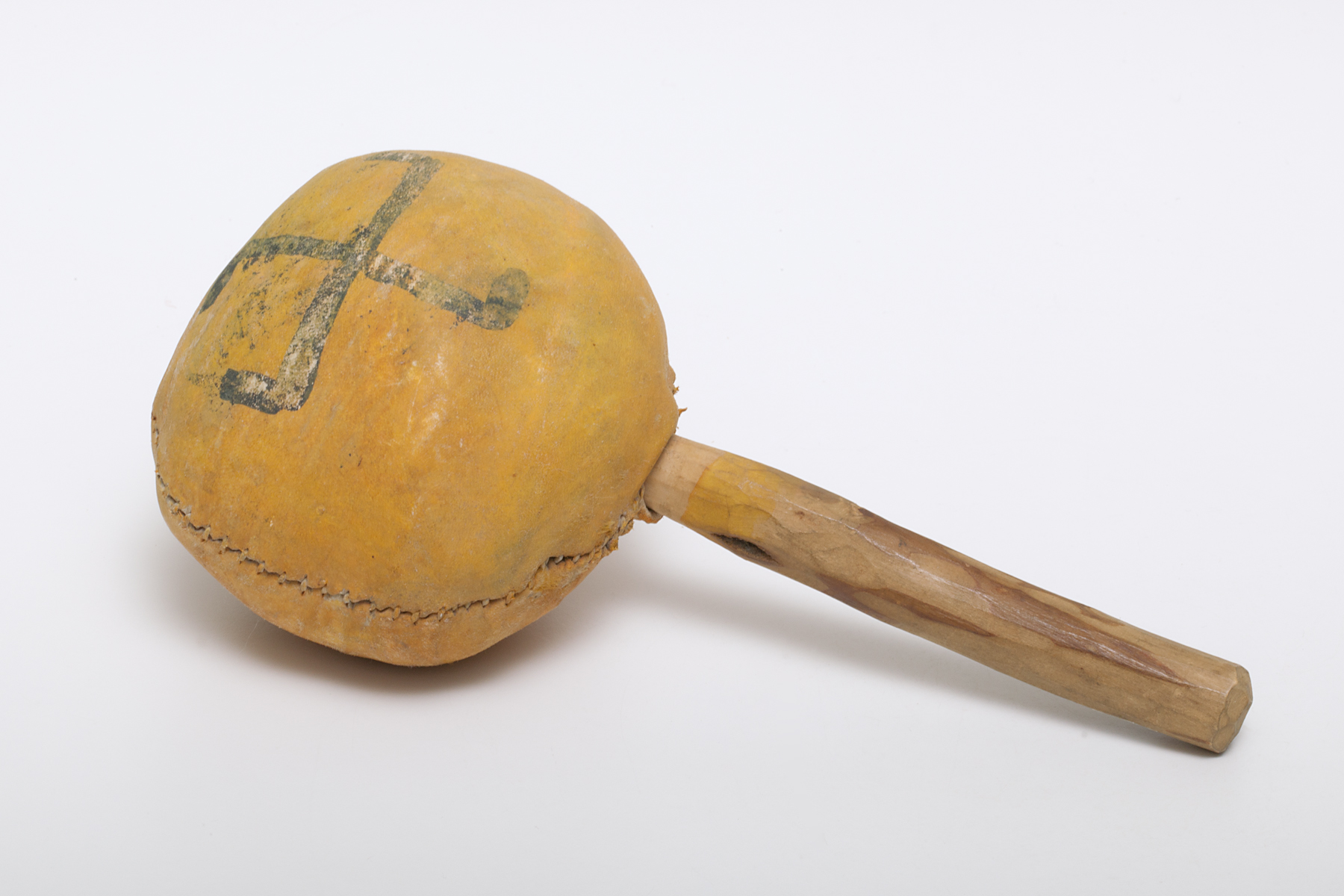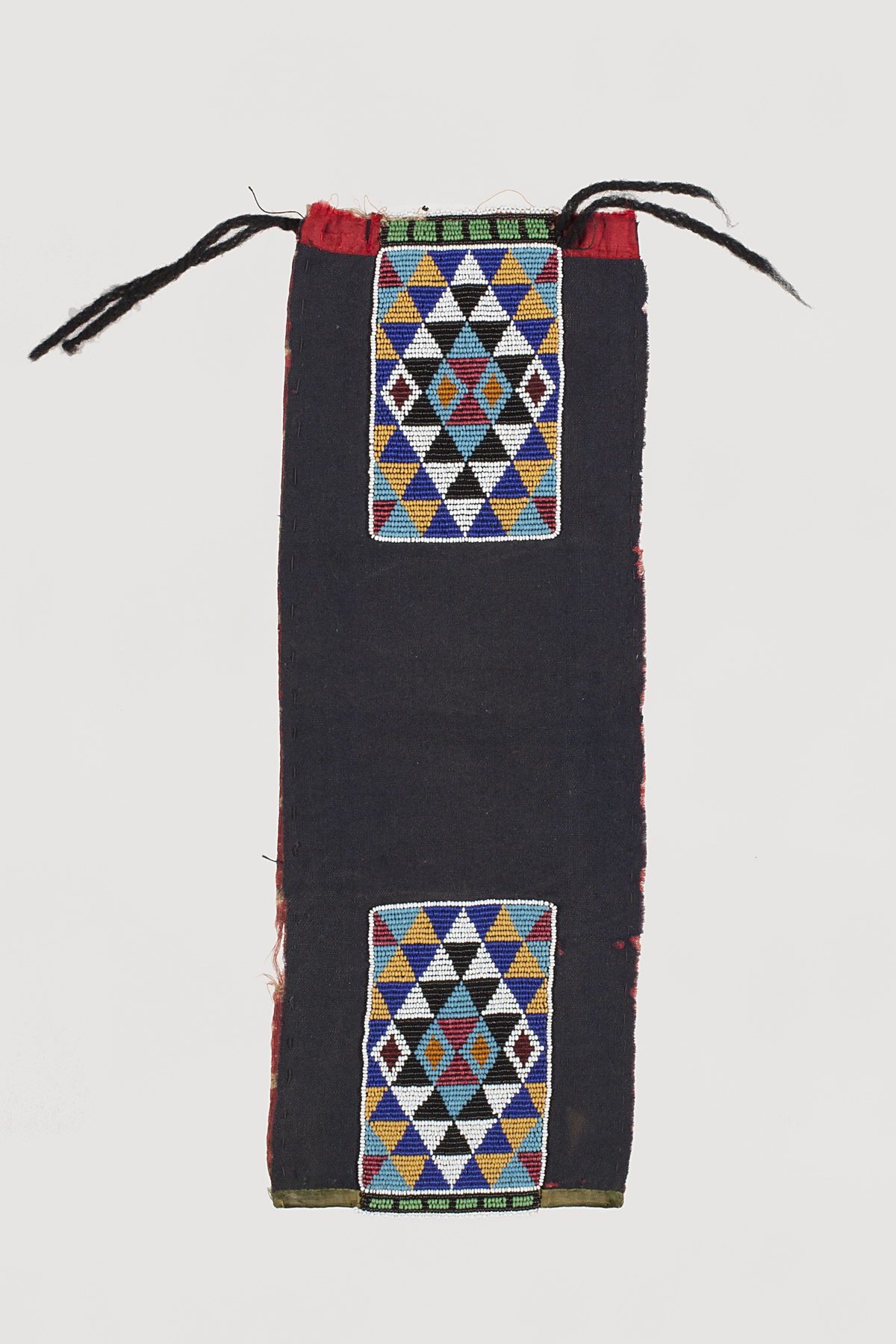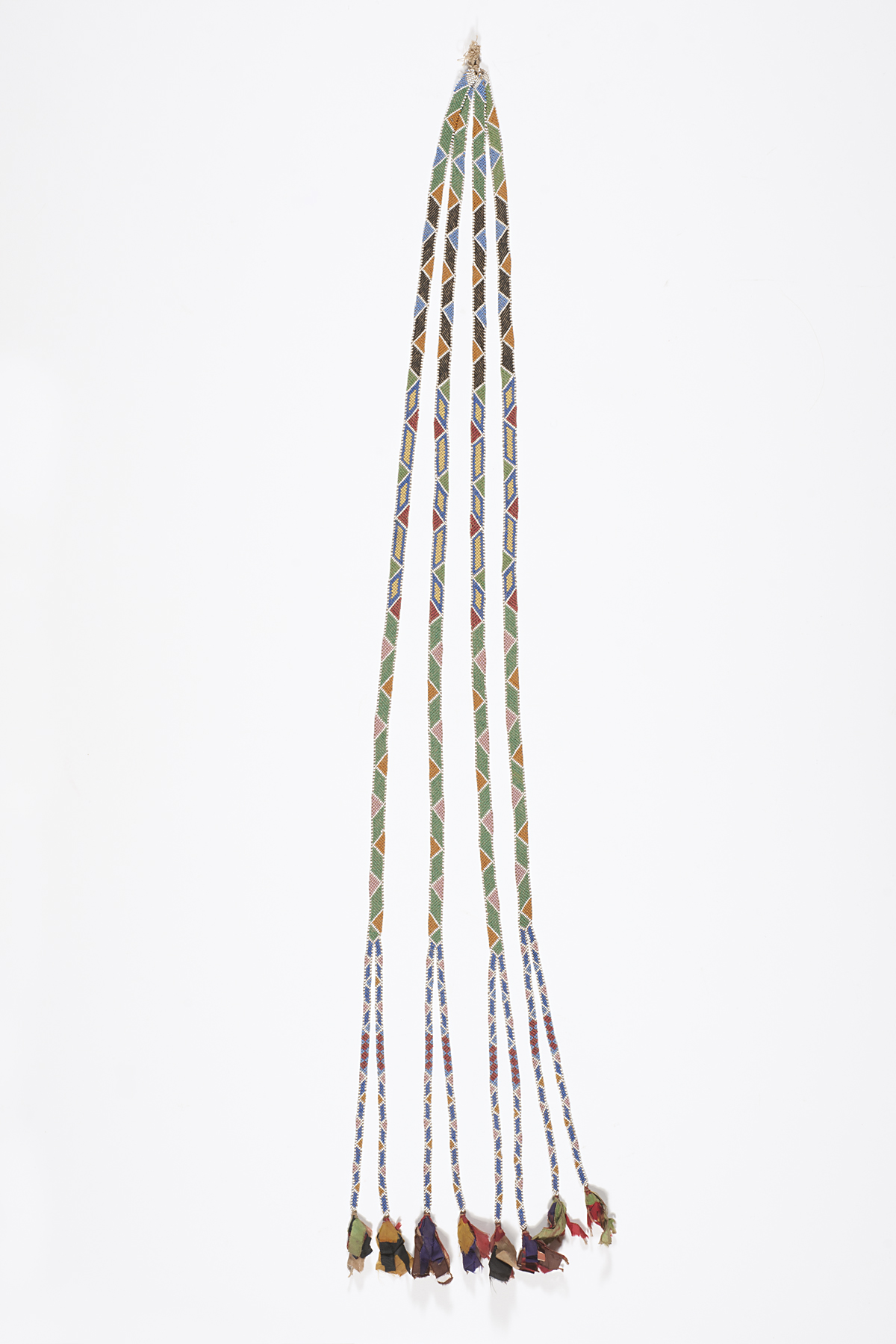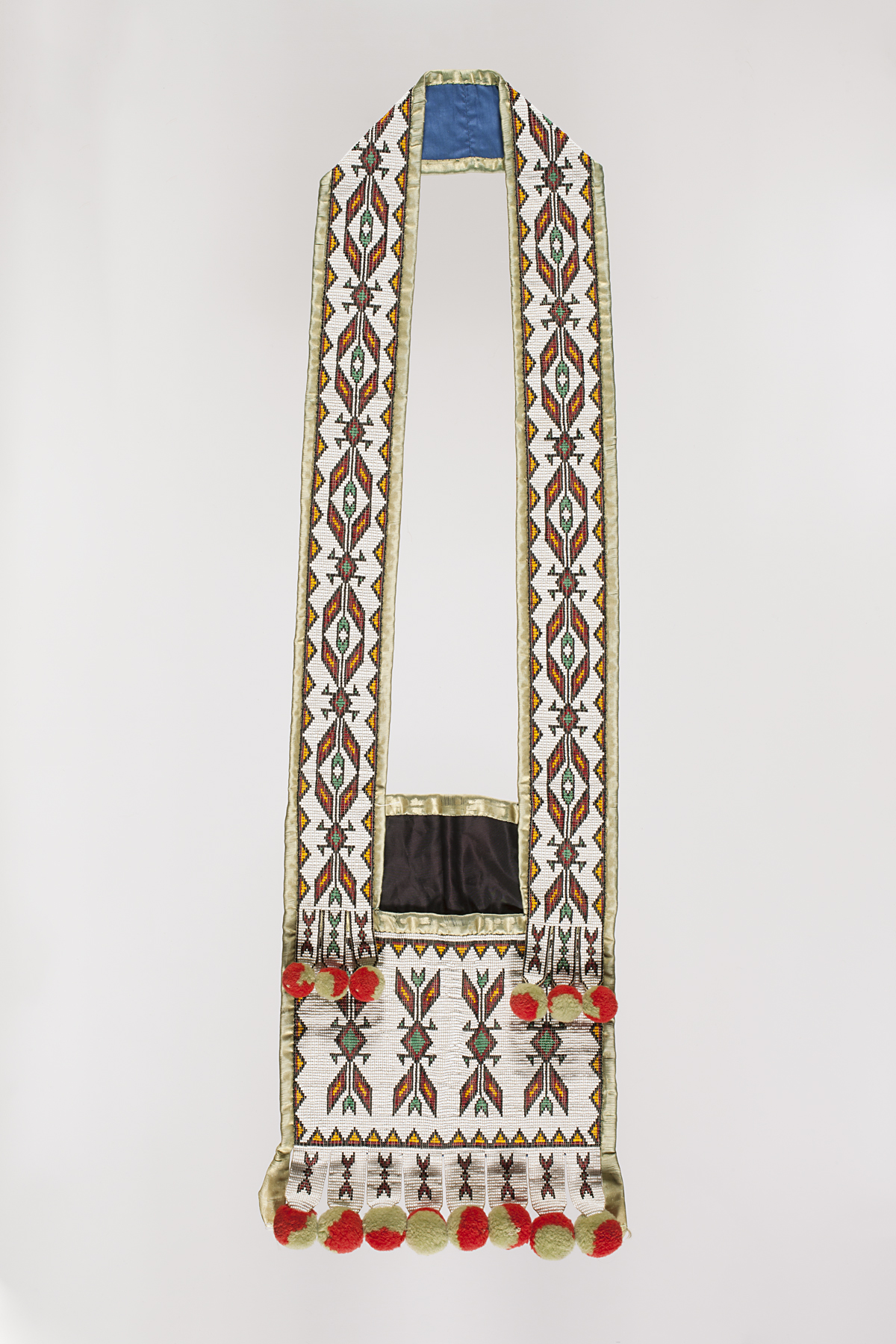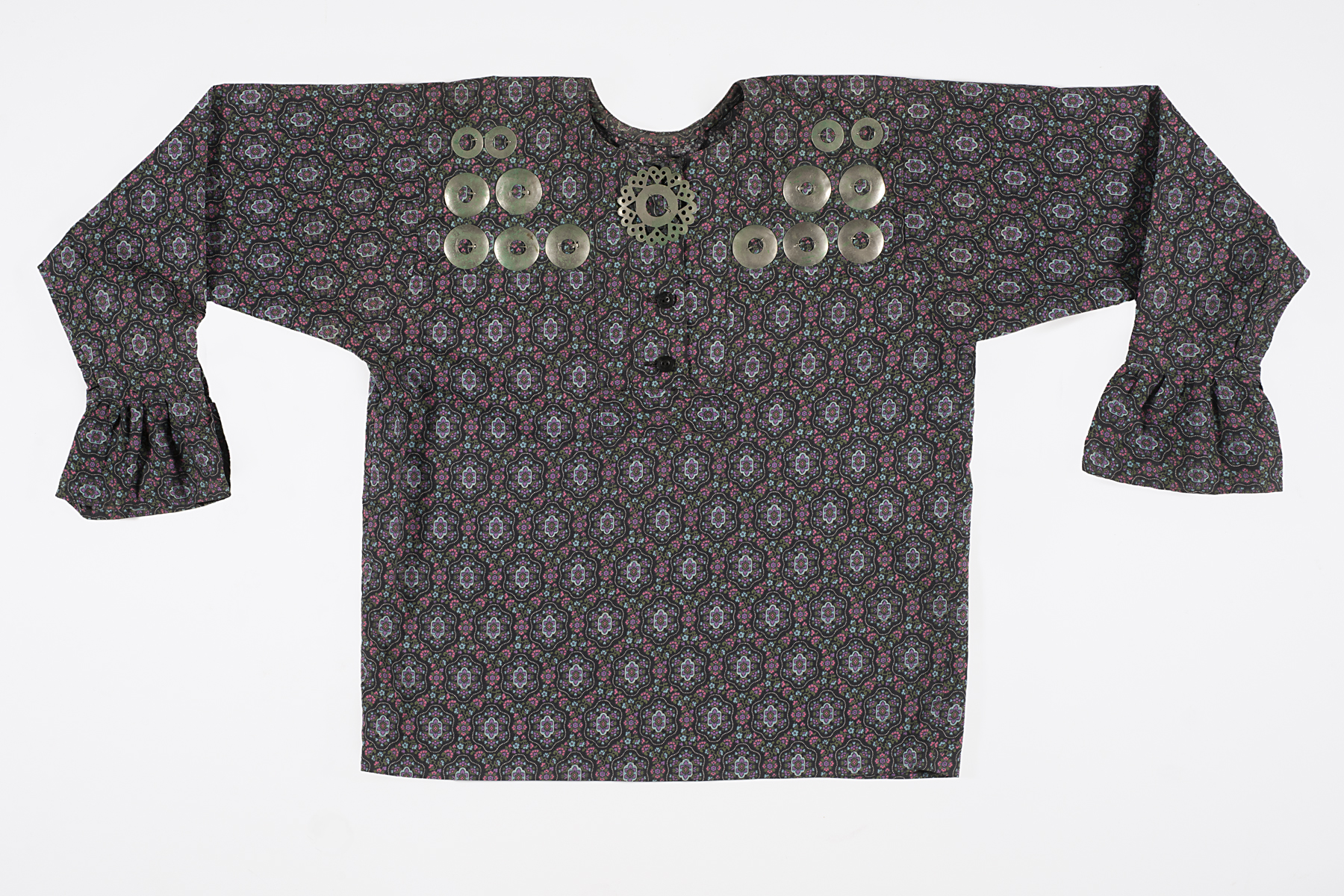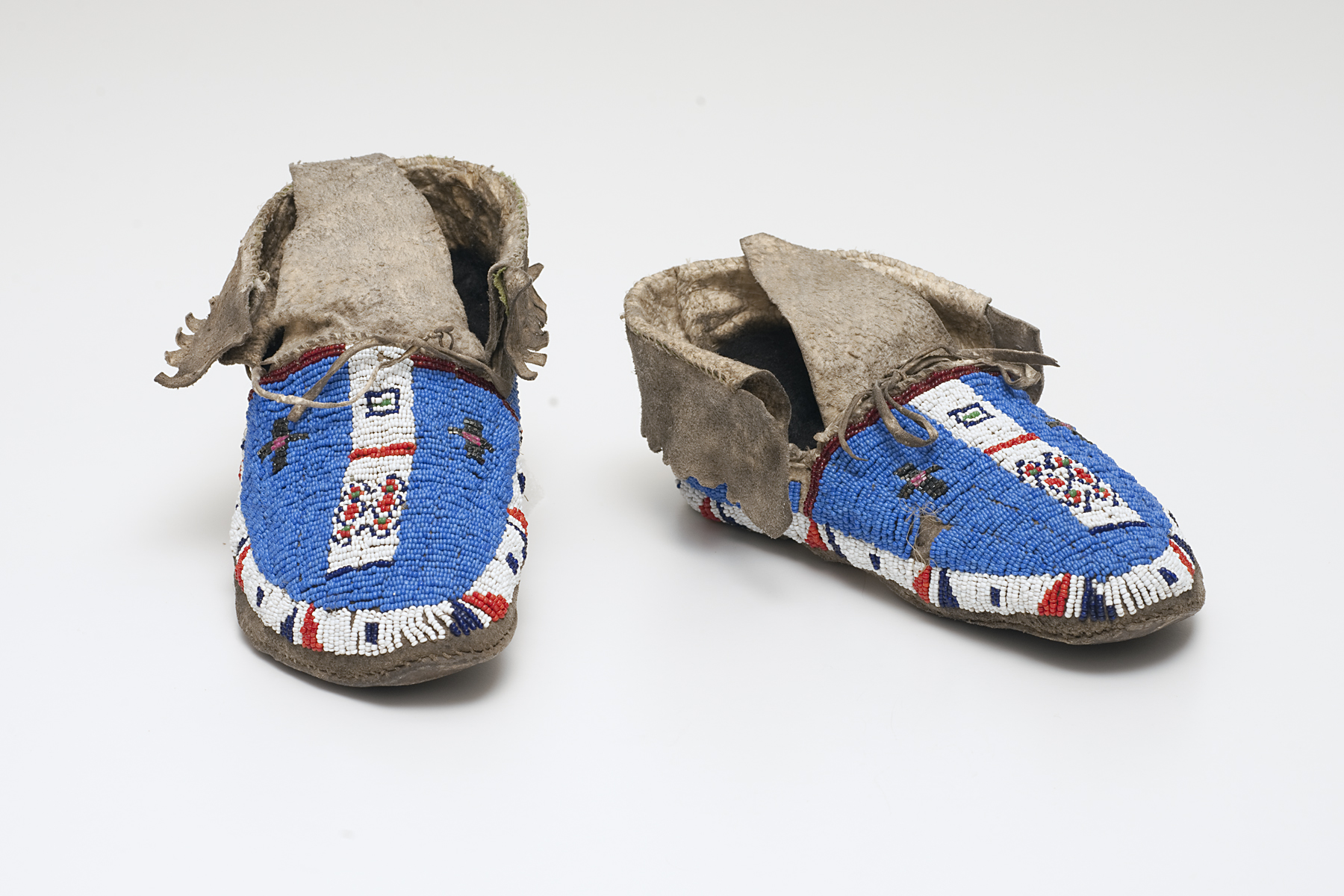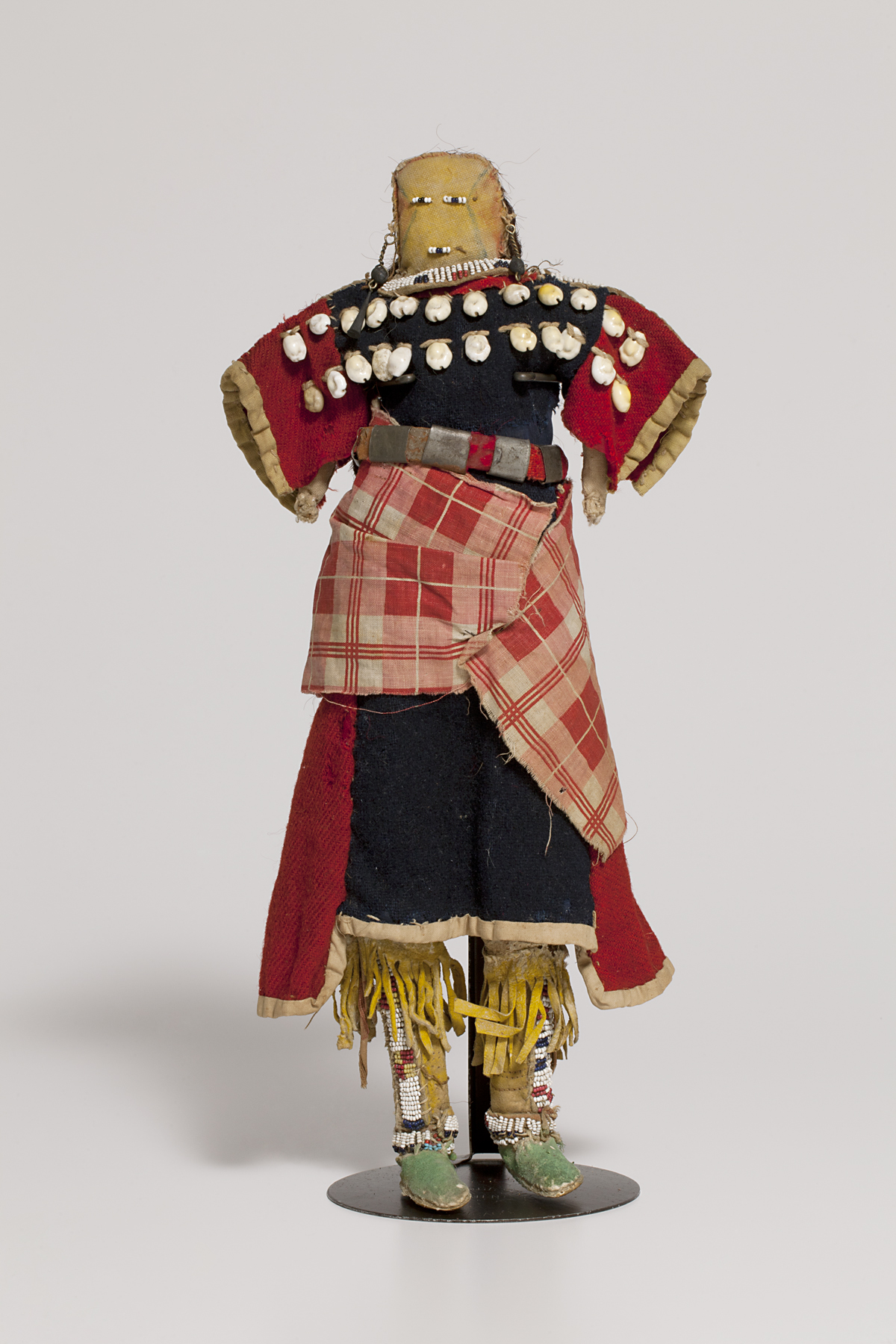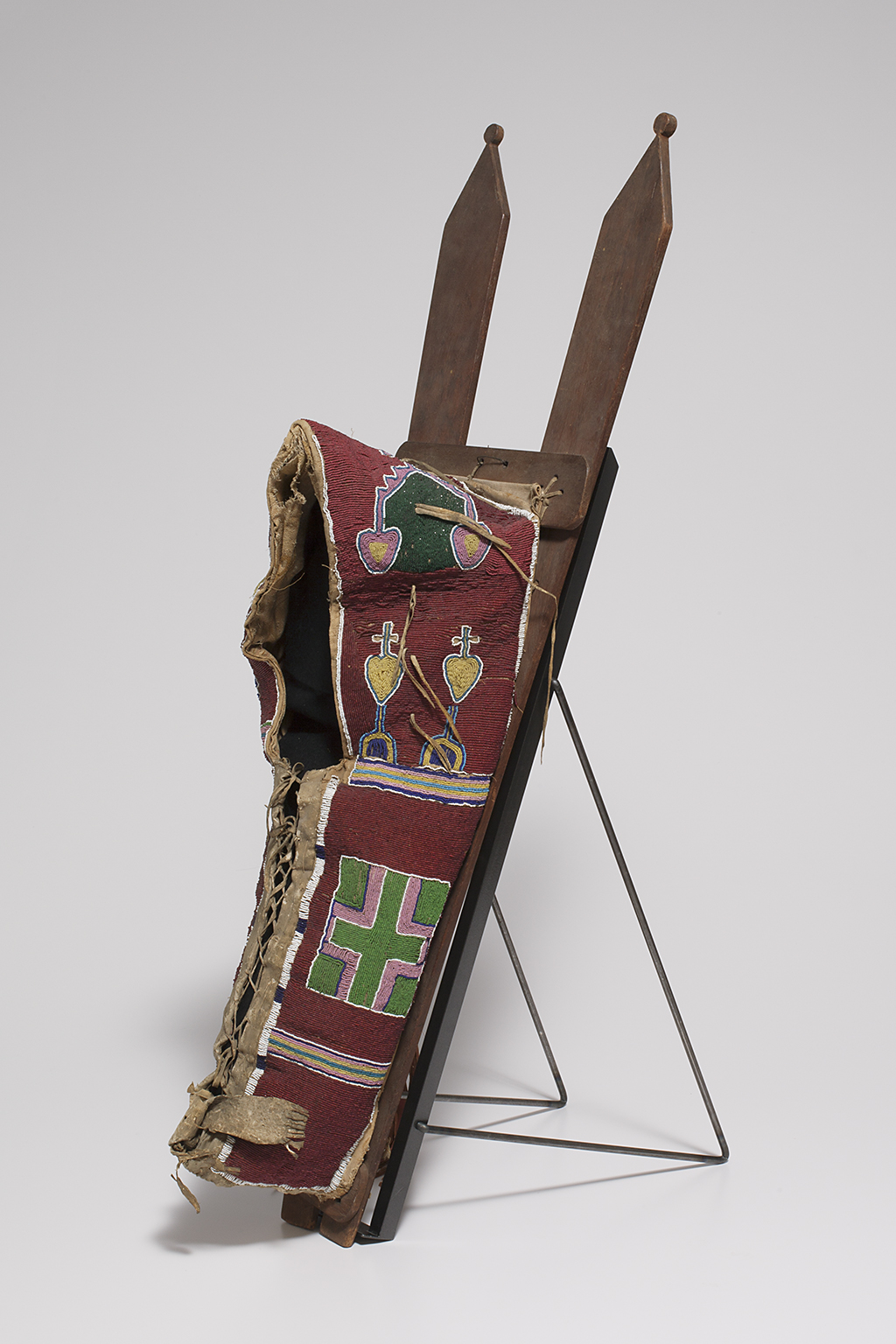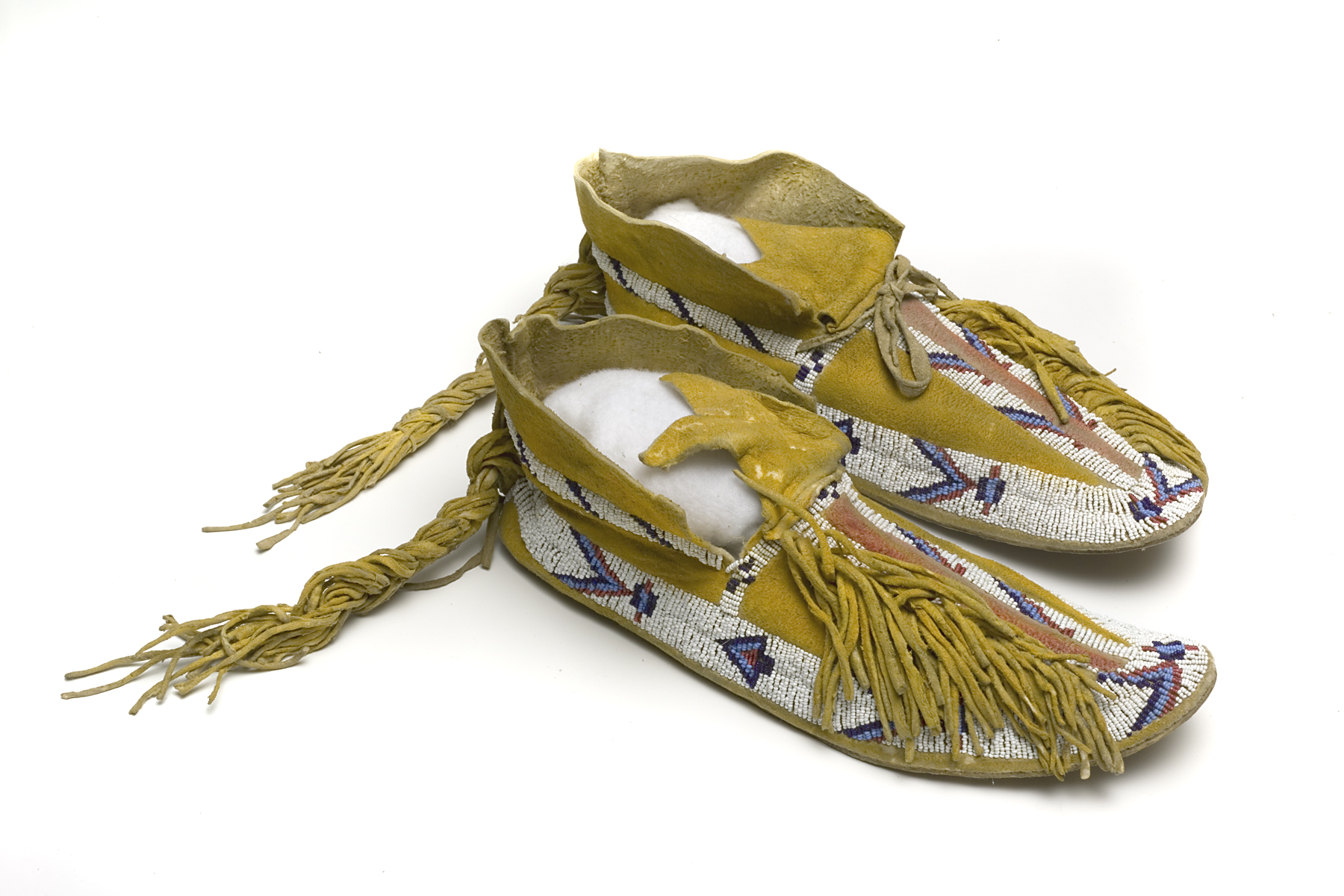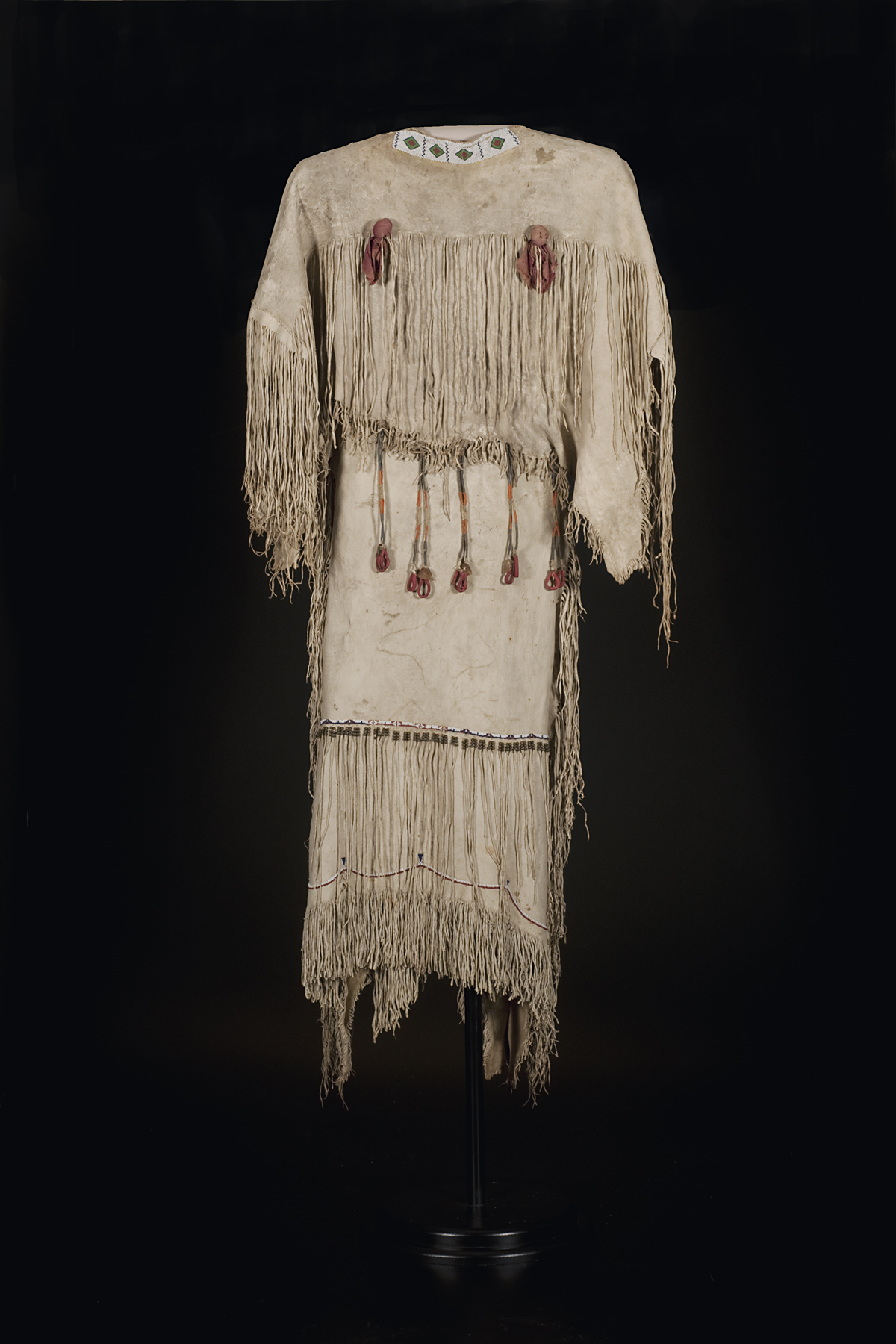Vanished Voices: The Legacy of Northeast Kansas Indians
Exhibition Overview

Andrea Norris, curator
It is important to note that the title of the exhibition does not refer to vanished civilizations; cultures of the Indian Nations represented here survive and flourish on reservations and in communities in Kansas and Oklahoma. These nations have, however, vanished as indigenous people of Lawrence and most of Eastern Kansas as they were moved through force and treaty to other parts of Kansas or to other states. The exhibition includes objects drawn from museum collections in the Lawrence/ Kansas City/Topeka area. It does not include objects representing all the nations that spent time in Kansas, particularly those who lived in western Kansas. Determining what Indian groups lived in eastern Kansas 150 years ago is complex, since so many people had been forced to leave or to relocate here as a result of pressure from their peers or from settlers from the United States. In the first half of the nineteenth century and especially during the 1830s, almost all Indians east of the Mississippi were moved west and directed or confined to reservations in so-called "Indian Territory," which generally comprised Oklahoma and parts of Kansas and Nebraska. With the designation of Kansas as a territory in 1854 and its official opening to white settlers, the Indians who had lived in Kansas for perhaps a generation or two were relocated to the newly defined Indian Territory in what is today Oklahoma. Most of the Indians who were forced to leave here in 1854 were hardly indigenous to this region, having spent barely a generation here. The indigenous peoples had migrated or been pressured to leave much earlier. In some cases they had migrated to the Eastern Woodlands, forced back to Kansas in the nineteenth century, and then pushed out again.
In conjunction with the Lawrence Sesquicentennial celebration and the annual Lawrence Indian Arts Show, the Spencer is pleased to present Vanished Voices: The Legacy of Northeast Kansas Indians, an exhibition organized by guest curator Joni Murphy and former museum director Andrea S. Norris. Vanished Voices: The Legacy of Northeast Kansas Indians is generously supported by Advocacy Research Institute, Inc.
"Vanished Voices: The Legacy of Northeast Kansas Indians" was organized for the Spencer Museum of Art by guest curator Joni Murphy and former museum director Andrea S. Norris, in conjunction with the Lawrence Sesquicentennial Celebration and the annual Lawrence Indian Arts Show. The exhibition is generously supported by Advocacy Research Institute, Inc.
In conjunction with the Lawrence Sesquicentennial celebration and the annual Lawrence Indian Arts Show, the Spencer is pleased to present "Vanished Voices: The Legacy of Northeast Kansas Indians," an exhibition organized by guest curator Joni Murphy and former museum director Andrea S. Norris. It is important to note that the title of the exhibition does not refer to vanished civilizations; cultures of the Indian Nations represented here survive and flourish on reservations and in communities in Kansas and Oklahoma. These nations have, however, vanished as indigenous people of Lawrence and most of Eastern Kansas as they were moved through force and treaty to other parts of Kansas or to other states. The exhibition includes objects drawn from museum collections in the Lawrence/ Kansas City/Topeka area. It does not include objects representing all the nations that spent time in Kansas, particularly those who lived in western Kansas. Determining what Indian groups lived in eastern Kansas 150 years ago is complex, since so many people had been forced to leave or to relocate here as a result of pressure from their peers or from settlers from the United States. In the first half of the nineteenth century and especially during the 1830s, almost all Indians east of the Mississippi were moved west and directed or confined to reservations in so-called "Indian Territory," which generally comprised Oklahoma and parts of Kansas and Nebraska. With the designation of Kansas as a territory in 1854 and its official opening to white settlers, the Indians who had lived in Kansas for perhaps a generation or two were relocated to the newly defined Indian Territory in what is today Oklahoma. Most of the Indians who were forced to leave here in 1854 were hardly indigenous to this region, having spent barely a generation here. The indigenous peoples had migrated or been pressured to leave much earlier. In some cases they had migrated to the Eastern Woodlands, forced back to Kansas in the nineteenth century, and then pushed out again.
